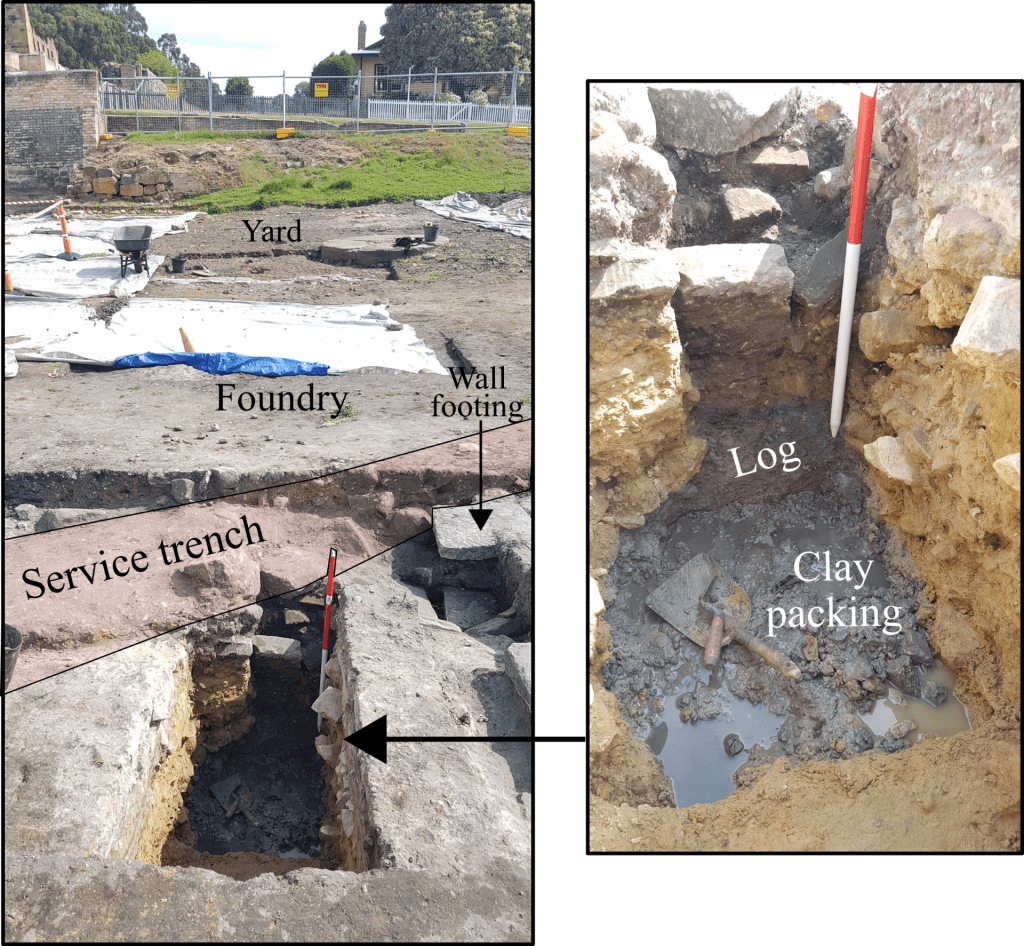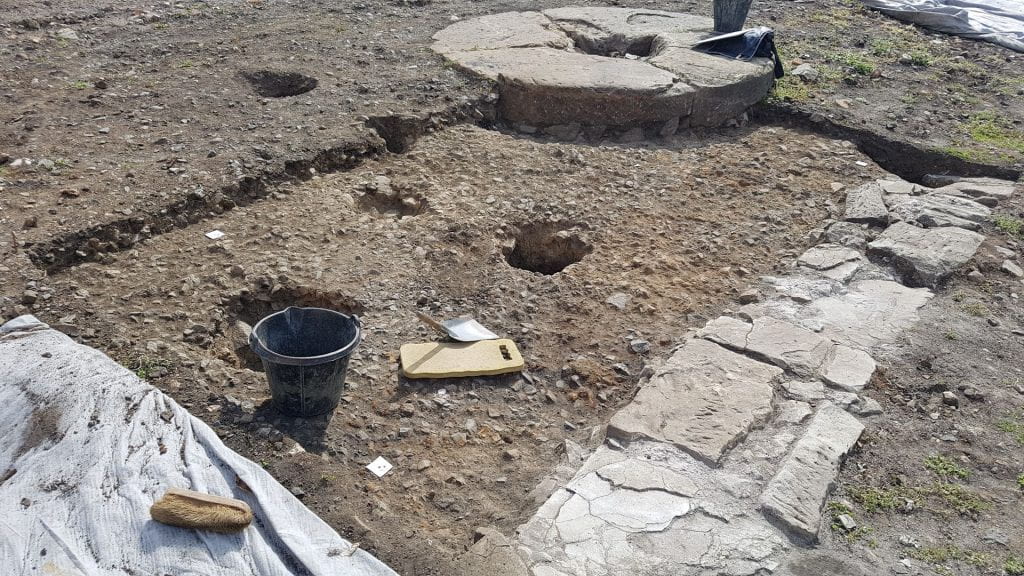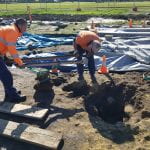Another week. Another pile of earth moved. It’s been a mixed week (well, three days) with some exciting developments in one square…and not much else in another. First, to the exciting bit.
Sylvana has been plugging away in the northern square, which, if you remember, is where the workshops originally abutted the edge of the water. Sylvana has found layers of reclamation material from when they began to fill the bay in front of the workshops (probably starting in the late 1830s). She’s made her way through about 60cm of loose yellow sandstone waste material, which we think is likely from one of the first quarries opened at Port Arthur (to the south west of the station, in the Mt Arthur foothills). Today she found a rather damp and stinky layer of greenish sandstone waste and clay below the yellow sandstone. This had been placed around a large, round piece of timber. Now, we haven’t had a chance to look at it in any detail, but it seems to be a relatively unworked (well, cut-down and de-limbed) log, possibly with bits of bark still on. This has been used as cribbing to make a firm area of reclamation. This basically means creating ‘boxes’ of logs (like a lattice), which are then filled with waste stone and clay. We’re pretty excited by this, as, upon taking some levels, the log is about 20cm from mean sea level – we’ve possibly found a really early part of the waterfront! As I said, early days, but I will put some posts up later on sandstone quarries and reclamation techniques at Port Arthur.
Urgh. In my trench it’s all gravel and blisters. For someone trained in the commercial arts of digging (i.e. rip it out and if it turns out you shouldn’t have ripped it out, put it back), it’s a frustratingly slow process. Within about 5-10cm there has been at least five different dolerite gravel surfaces. These seem to span the 1830s, right through to the 1870s, with the dolerite changing in composition and grade between each surfacing ‘event’. The earliest dolerite is very rounded and weathered, possibly having been collected from the waterfront area. The later stuff is angular and very ‘blue’ – like it was quarried yesterday. This is likely from the quarry where today’s memorial garden is situated. Precious few artefacts are coming off the surfaces, just a lot of unidentified metal objects. These don’t appear to be from metal working per se, but seem to be bits of scrap iron that was just left lying on the surface until it corroded onto the gravel. This is very odd- particularly at a station where such iron could have been used for illicit purposes. I need to think more about why the iron is there…




